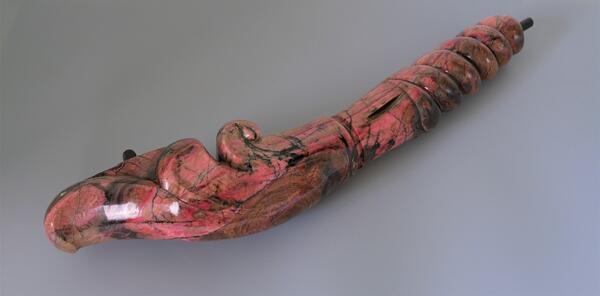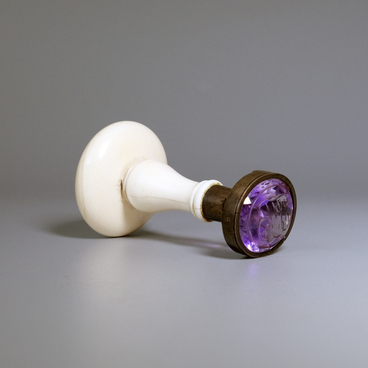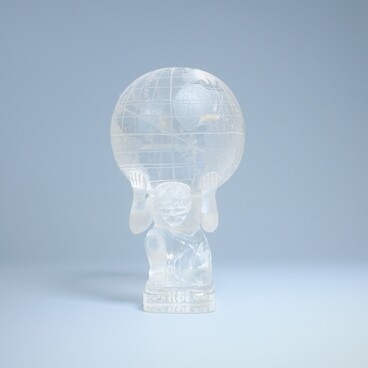The architectural rhodonite piece was made by masters of the Yekaterinburg Imperial Lapidary Factory. This piece was intended for the memorial canopy near the famous Church of the Resurrection of Christ in St. Petersburg — also known as the Church of the Savior on the Spilled Blood. Researches could not determine why it was not used and how it became part of the museum collection.
The Church of the Savior on the Spilled Blood was built on the embankment of the Catherine Canal (presently — Griboyedov Canal), on the spot where Emperor Alexander II was mortally wounded. That is where the unofficial name of the church comes from.
Construction of the church began in 1883. Architect Alfred Parland created the project for it. He designed it to resemble the St. Basil’s Cathedral in Moscow. The construction took 24 years: it began during the reign of Alexander III, and was completed during the reign of Nicholas II.
The Imperial Lapidary Factory in Yekaterinburg made for the Church two kiots (icon cases), a ciborium, an altar lamp and a memorial canopy over the place where the emperor was wounded. The total cost of the work was over half a million rubles.
The canopy was placed to the right of the church’s main entrance. It rested on four columns made of grey and violet porphyry which were connected by a rhodonite balustrade. Decorative vases made of the same stone adorned it.
Since the end of 18th century, rhodonite was extracted in the deposits of the Middle Urals. In Russia at that time, it was called orlets. This stone was first discovered by peasant Nikita Partin 27 versts (old unit of measurement, ~28 km) from Yekaterinburg. This field was named Malosedelnikovskoye deposit. From the time of its discovery up until the revolution, it belonged to the Imperial Family, and the Cabinet of His Imperial Majesty supervised all mining operations. Mining at the deposit was not carried out constantly, but only when needed. They tried to extract whole rhodonite blocks, and therefore they were mined manually. Very seldom, the surrounding rock was blasted with gunpowder.
The rhodonite was shipped to lapidary factories in Yekaterinburg and Petergof, where it was used to produce vases, floor lamps, and statuettes. Generally, these items decorated halls and rooms of imperial palaces. For a long time, the stone from the Malosedelnikovskoye deposit was enough for these needs. Therefore, other rhodonite mines, which were initially discovered at the same time, became known much later.
The Church of the Savior on the Spilled Blood was built on the embankment of the Catherine Canal (presently — Griboyedov Canal), on the spot where Emperor Alexander II was mortally wounded. That is where the unofficial name of the church comes from.
Construction of the church began in 1883. Architect Alfred Parland created the project for it. He designed it to resemble the St. Basil’s Cathedral in Moscow. The construction took 24 years: it began during the reign of Alexander III, and was completed during the reign of Nicholas II.
The Imperial Lapidary Factory in Yekaterinburg made for the Church two kiots (icon cases), a ciborium, an altar lamp and a memorial canopy over the place where the emperor was wounded. The total cost of the work was over half a million rubles.
The canopy was placed to the right of the church’s main entrance. It rested on four columns made of grey and violet porphyry which were connected by a rhodonite balustrade. Decorative vases made of the same stone adorned it.
Since the end of 18th century, rhodonite was extracted in the deposits of the Middle Urals. In Russia at that time, it was called orlets. This stone was first discovered by peasant Nikita Partin 27 versts (old unit of measurement, ~28 km) from Yekaterinburg. This field was named Malosedelnikovskoye deposit. From the time of its discovery up until the revolution, it belonged to the Imperial Family, and the Cabinet of His Imperial Majesty supervised all mining operations. Mining at the deposit was not carried out constantly, but only when needed. They tried to extract whole rhodonite blocks, and therefore they were mined manually. Very seldom, the surrounding rock was blasted with gunpowder.
The rhodonite was shipped to lapidary factories in Yekaterinburg and Petergof, where it was used to produce vases, floor lamps, and statuettes. Generally, these items decorated halls and rooms of imperial palaces. For a long time, the stone from the Malosedelnikovskoye deposit was enough for these needs. Therefore, other rhodonite mines, which were initially discovered at the same time, became known much later.



